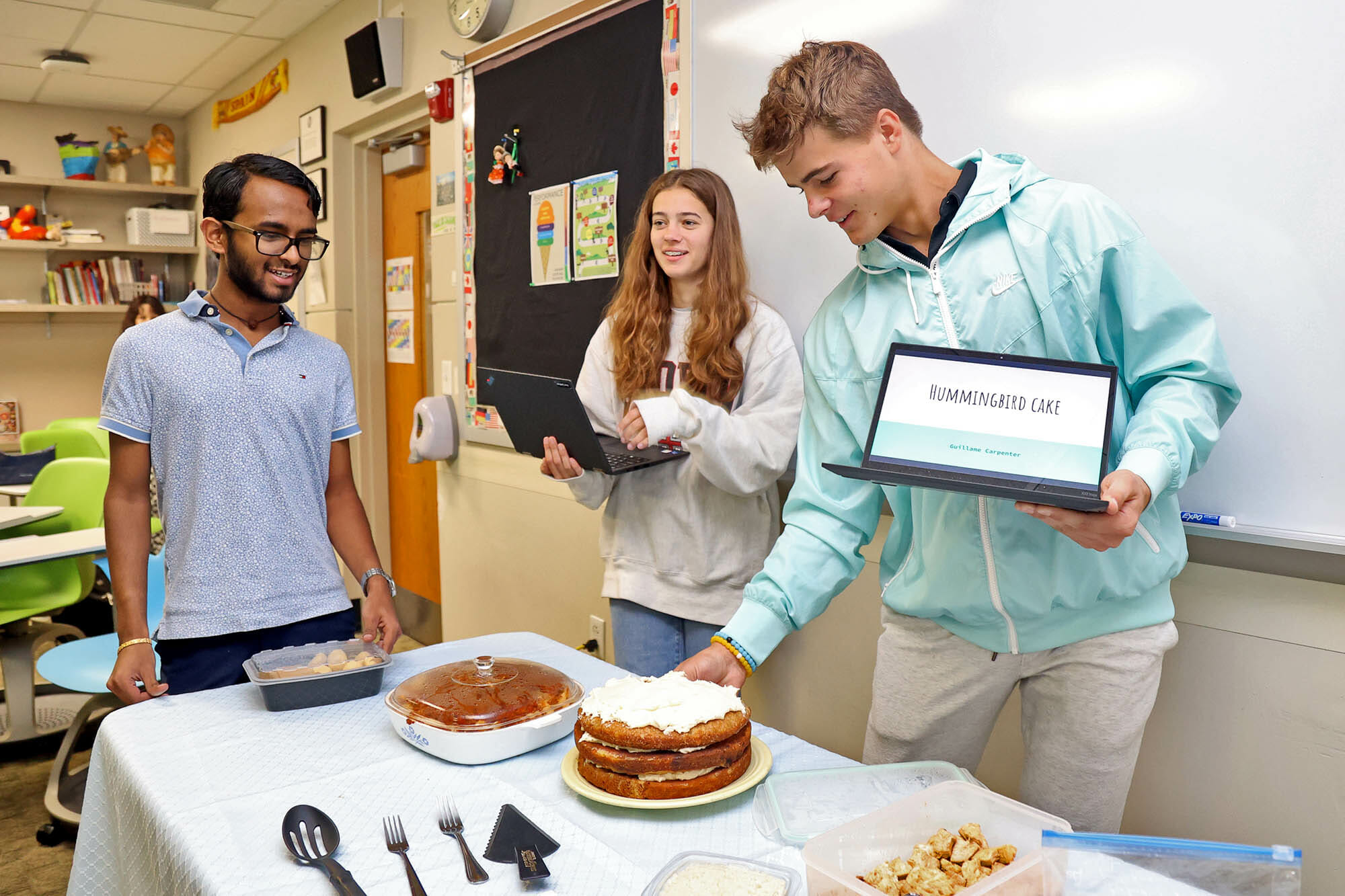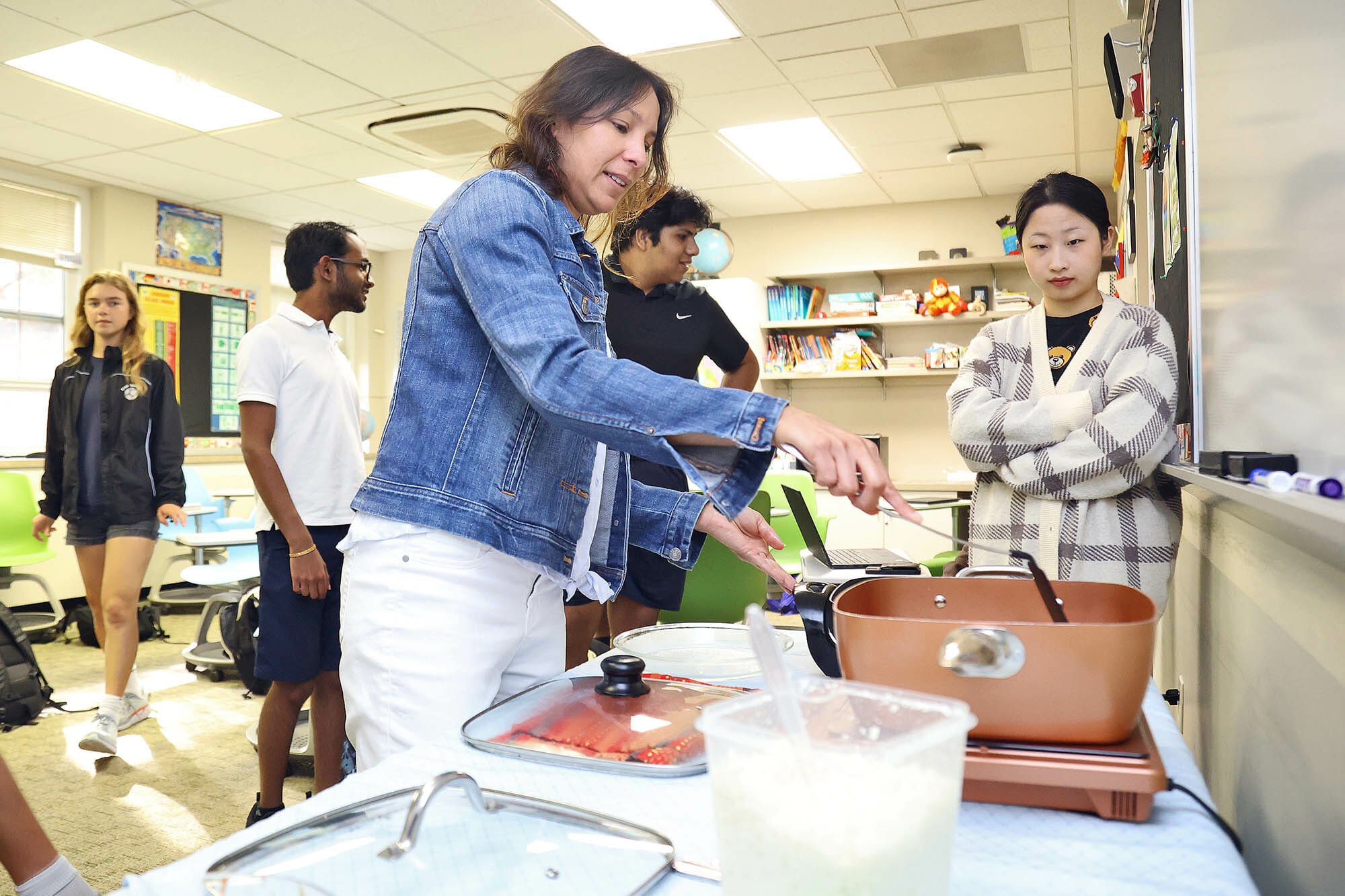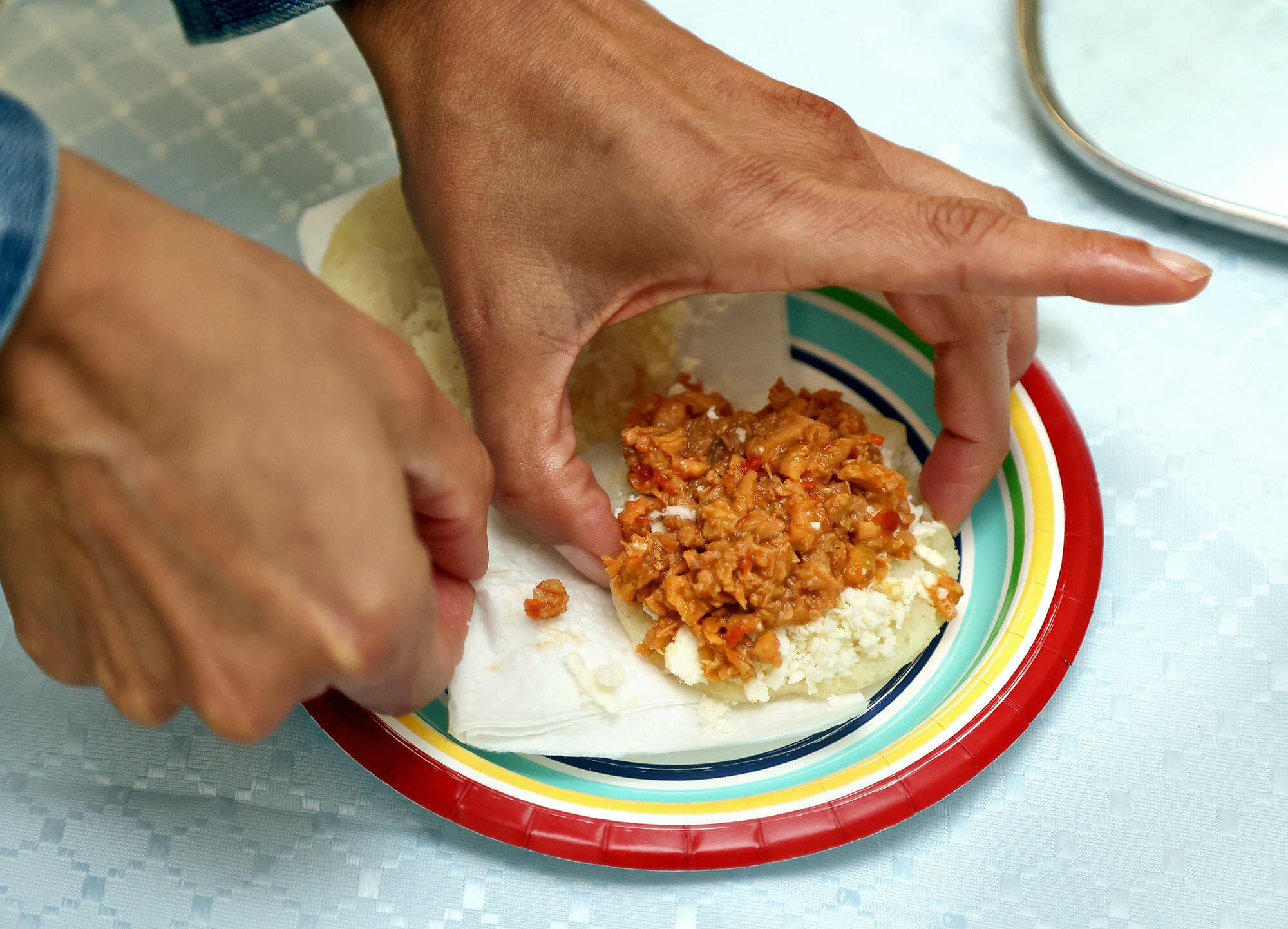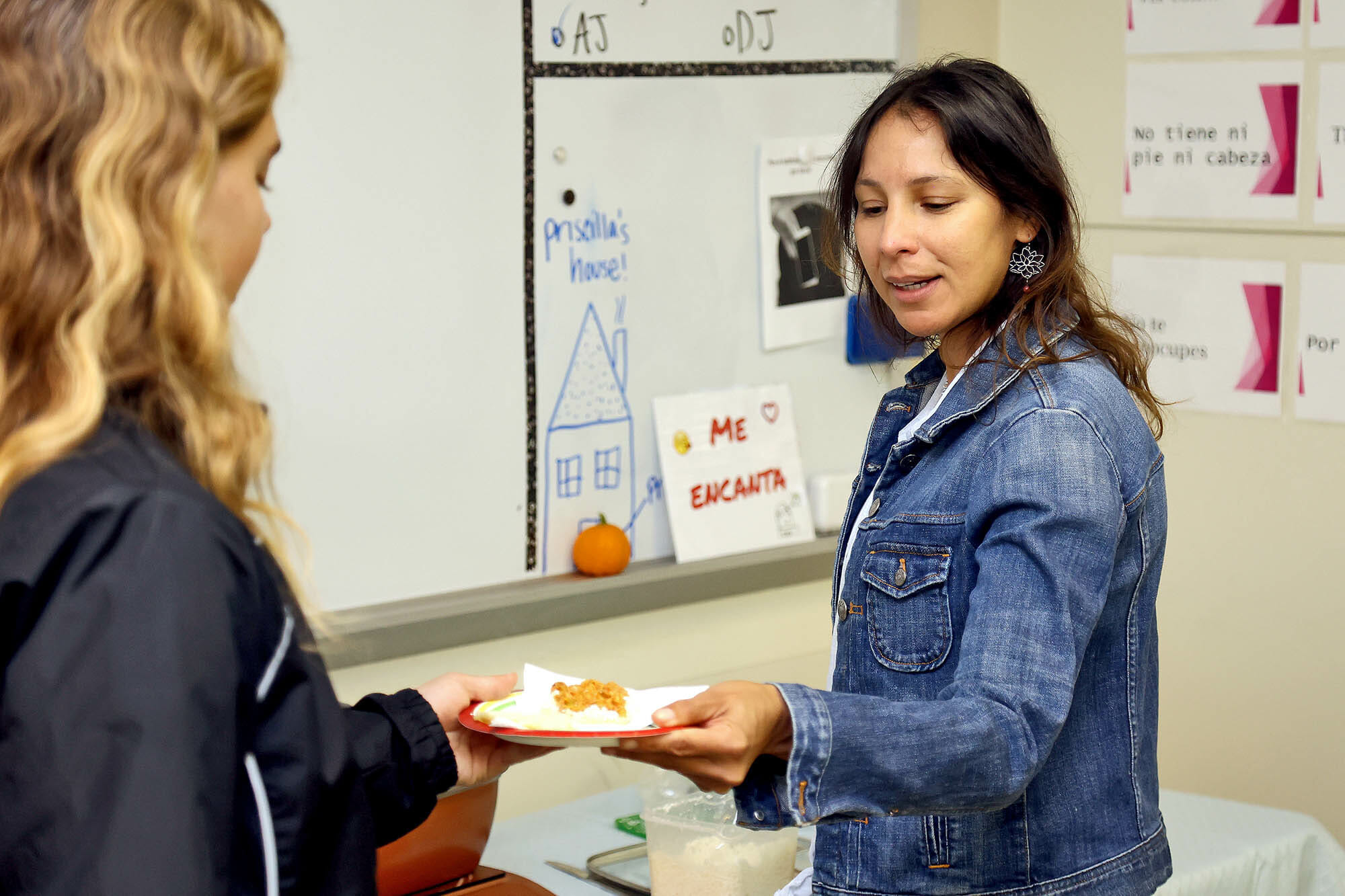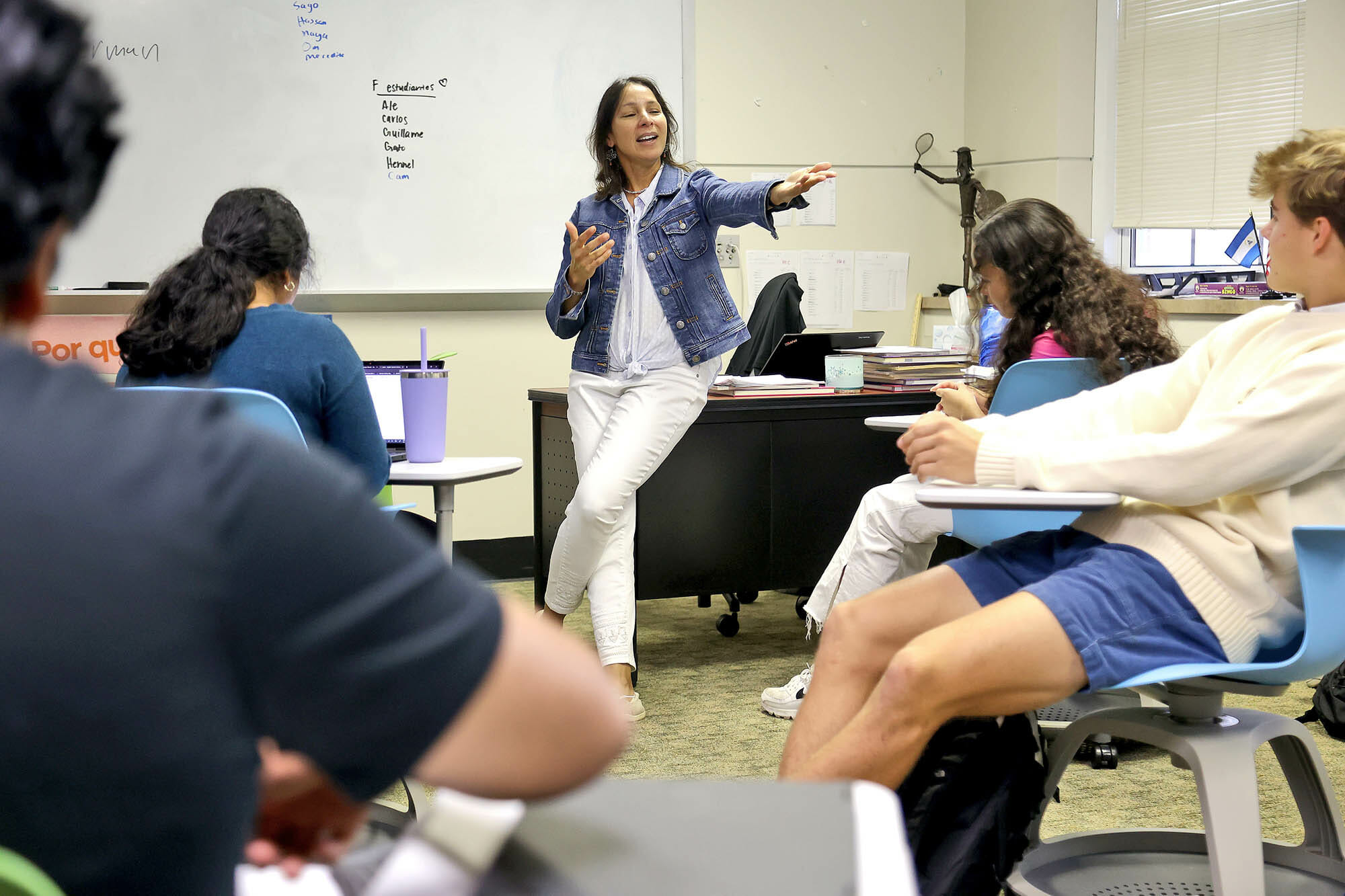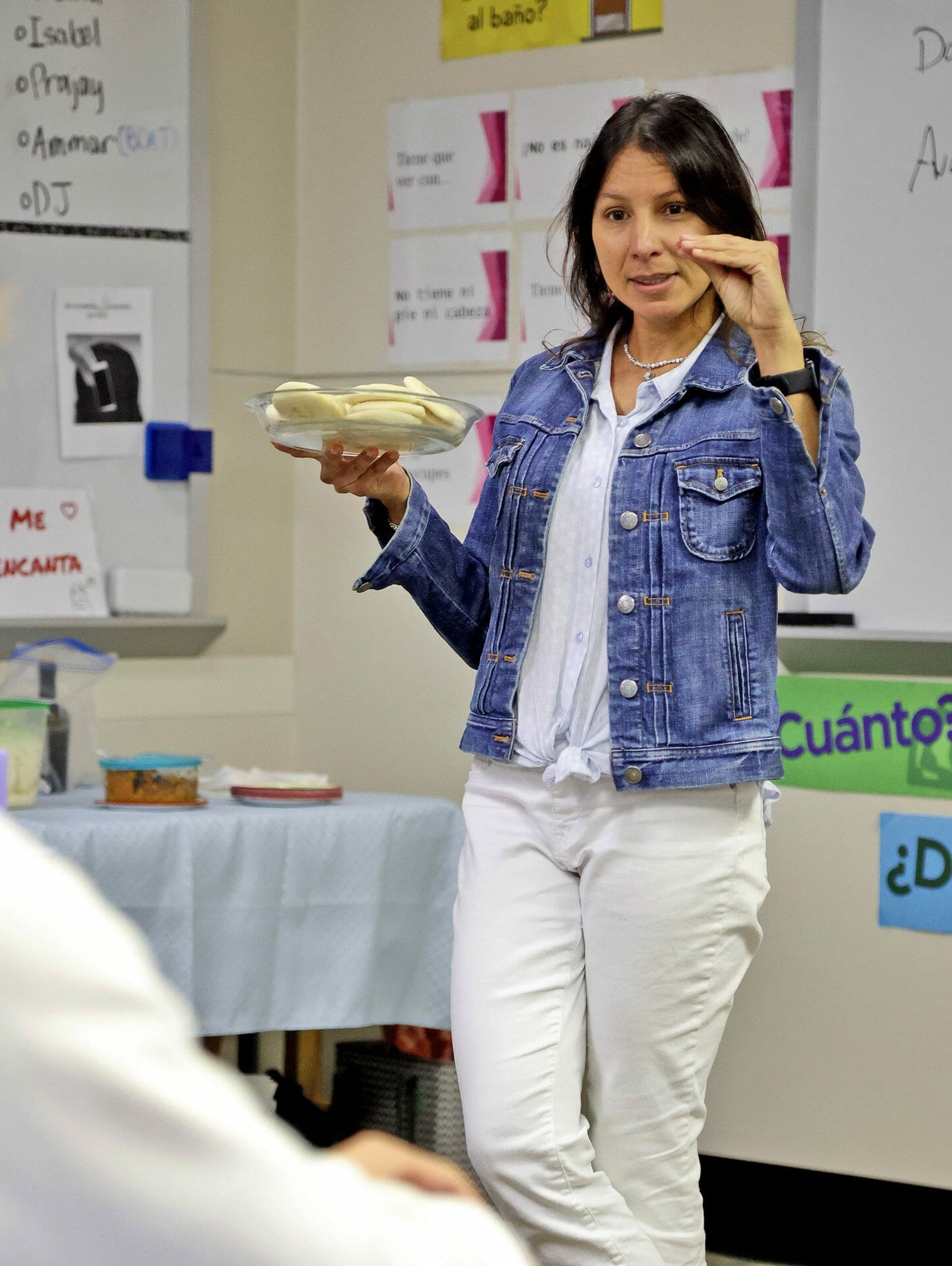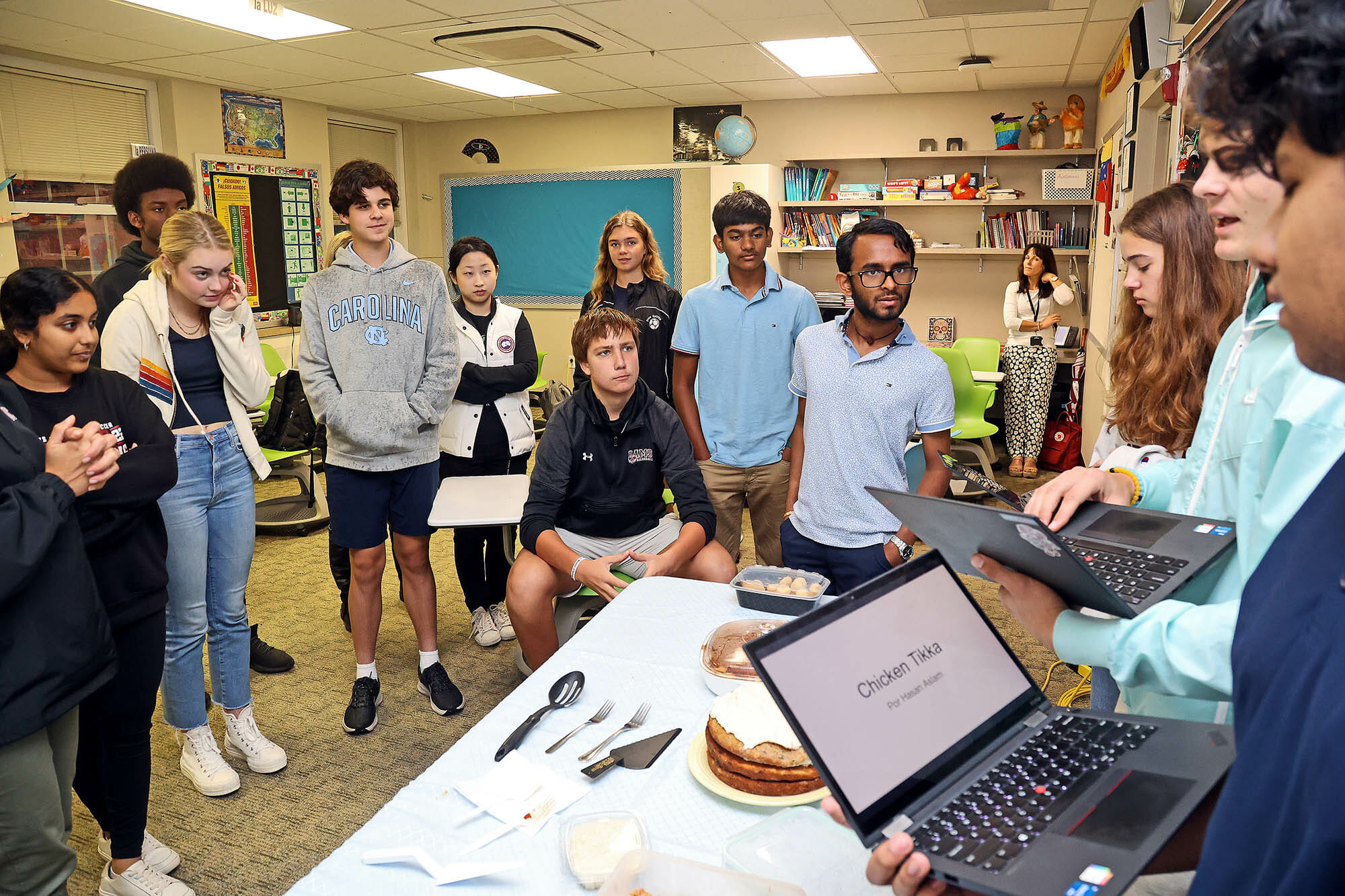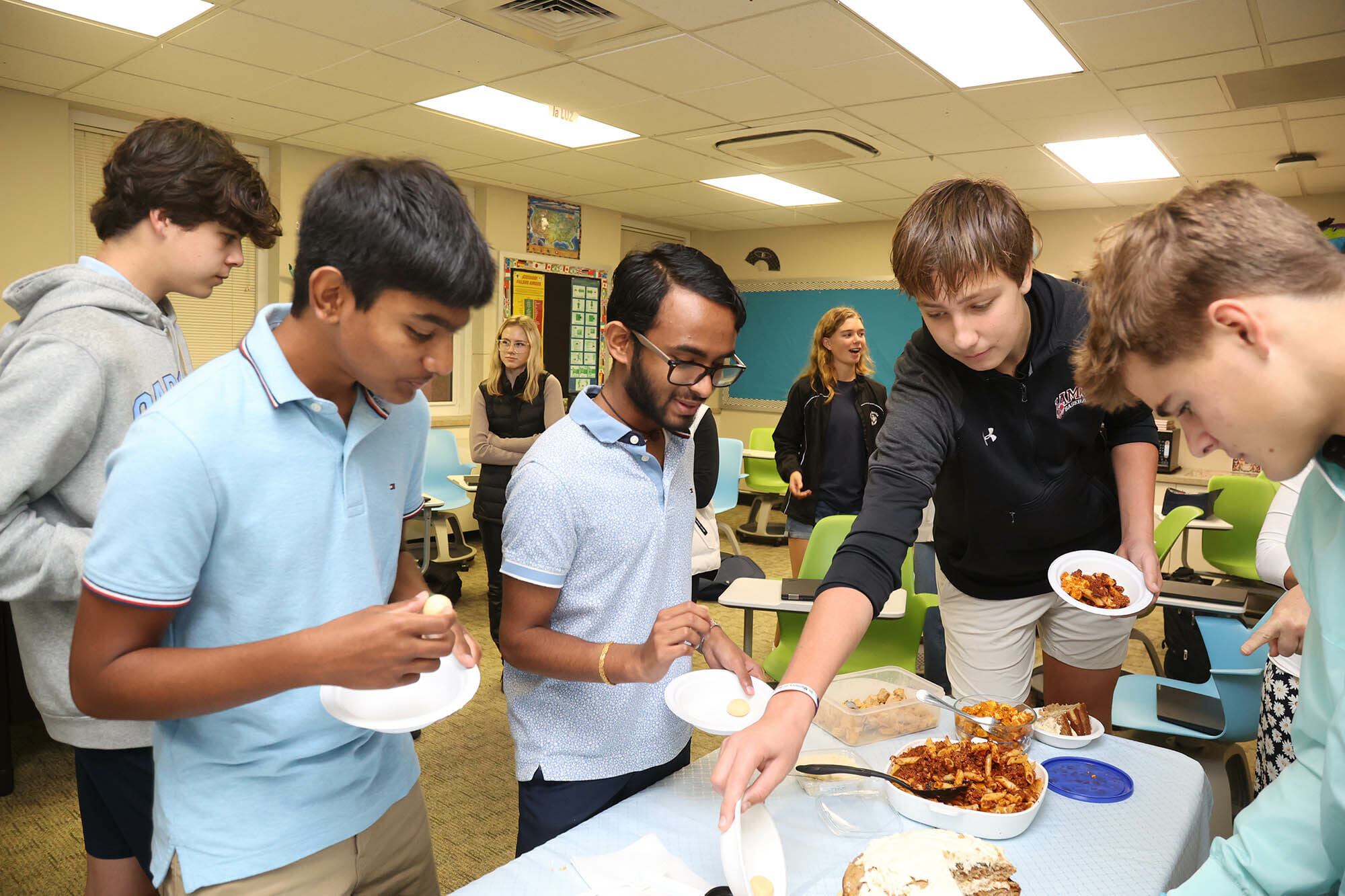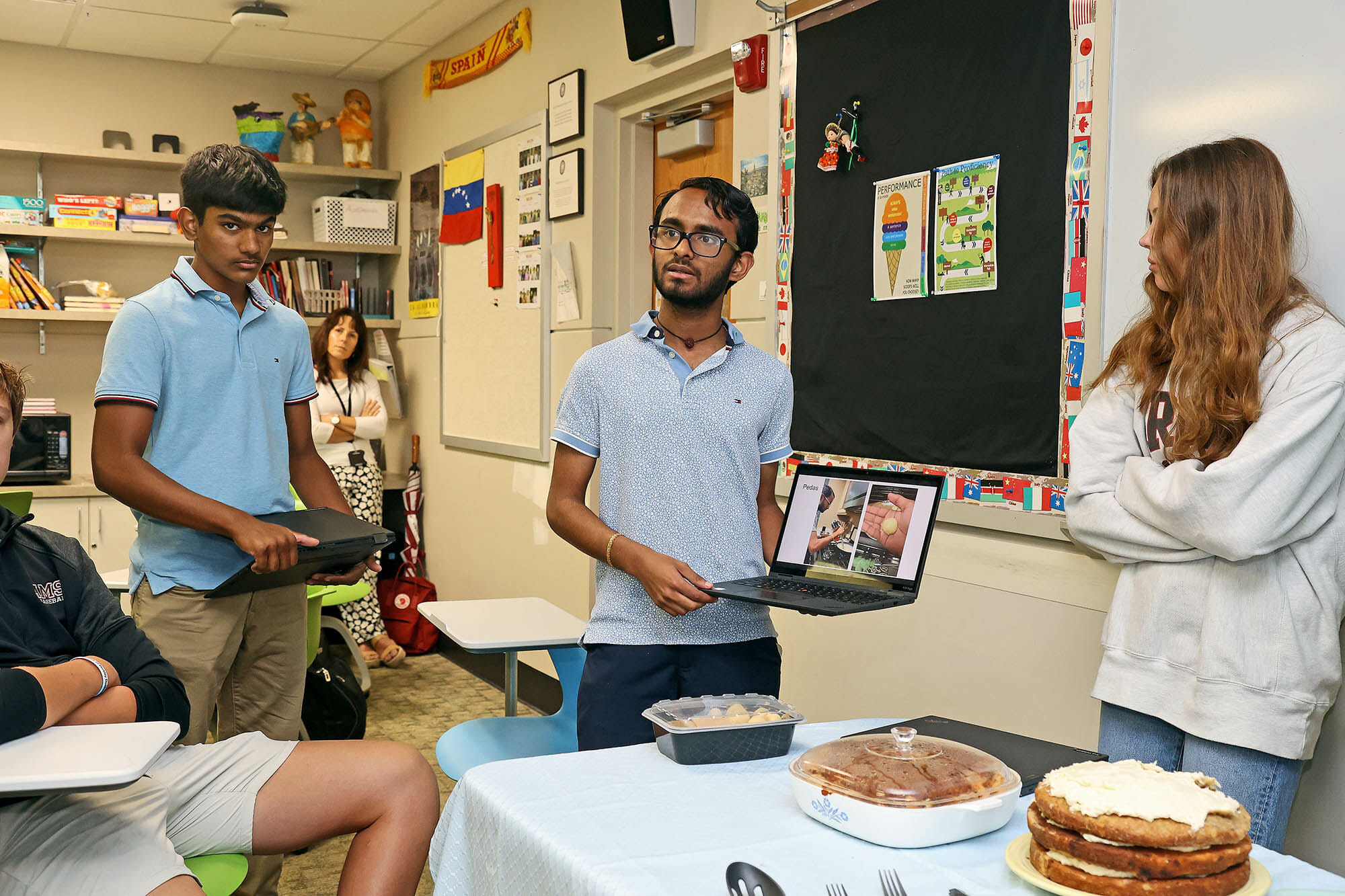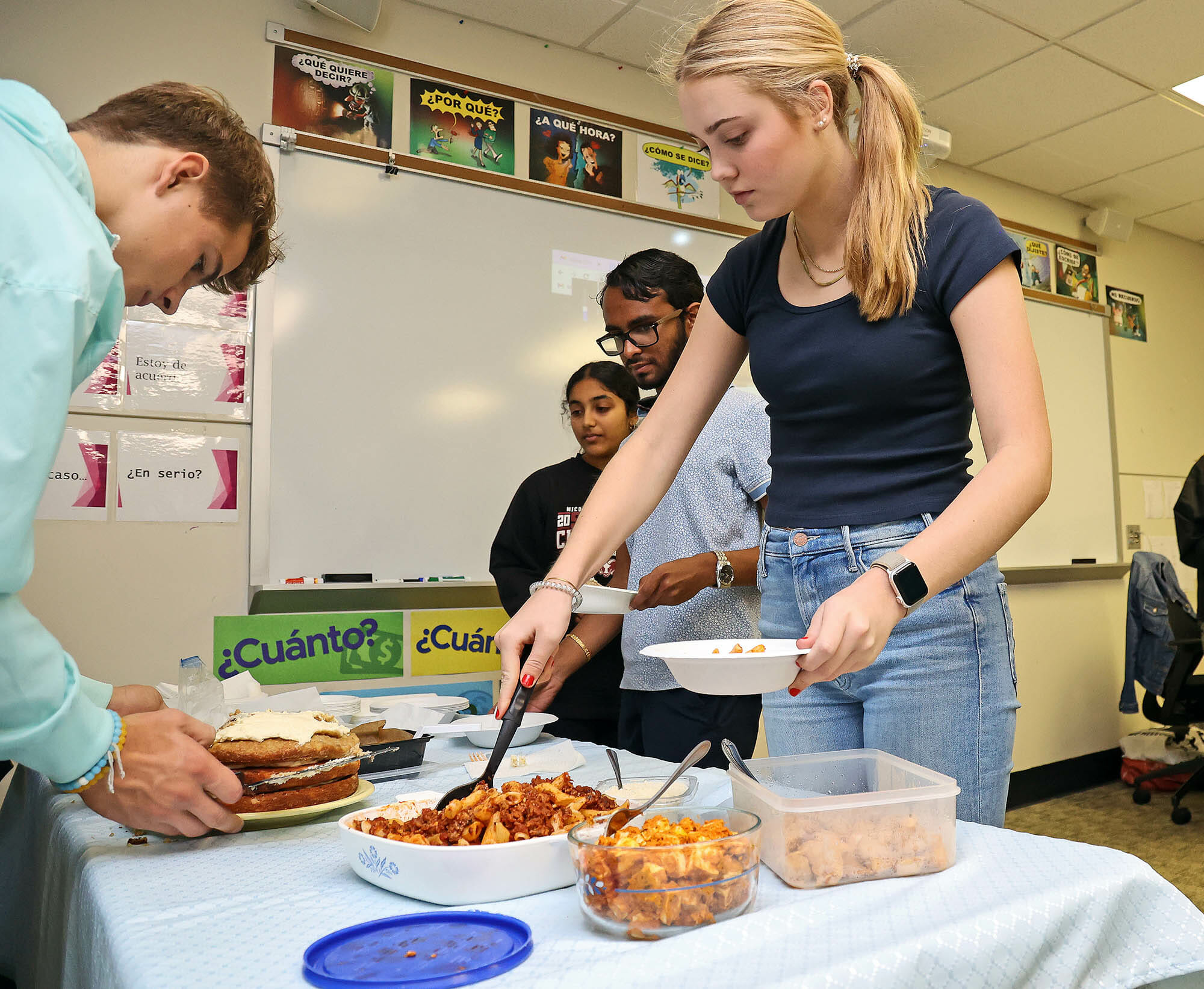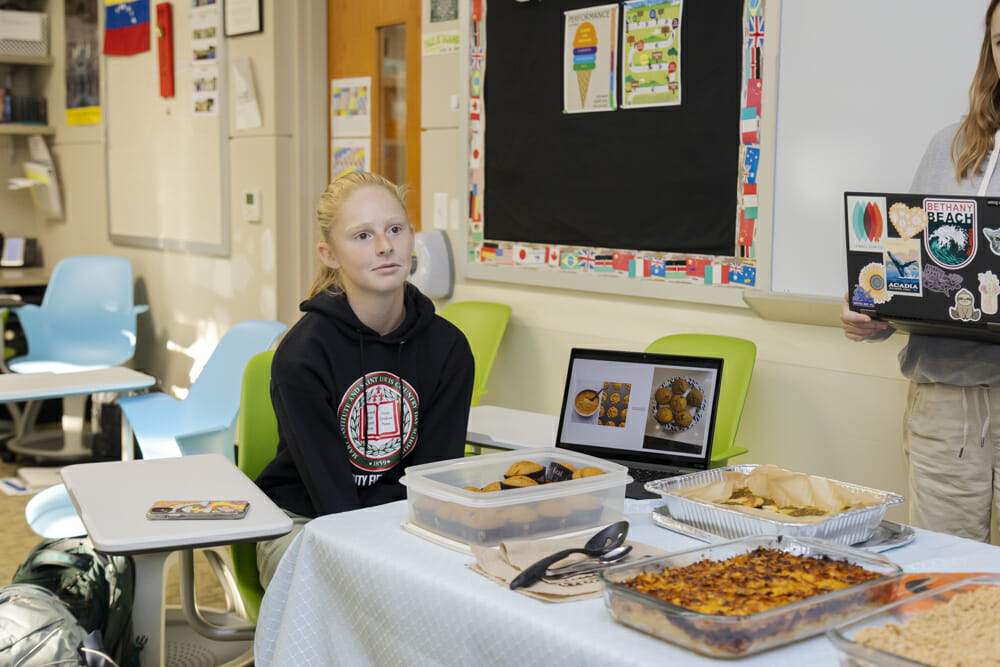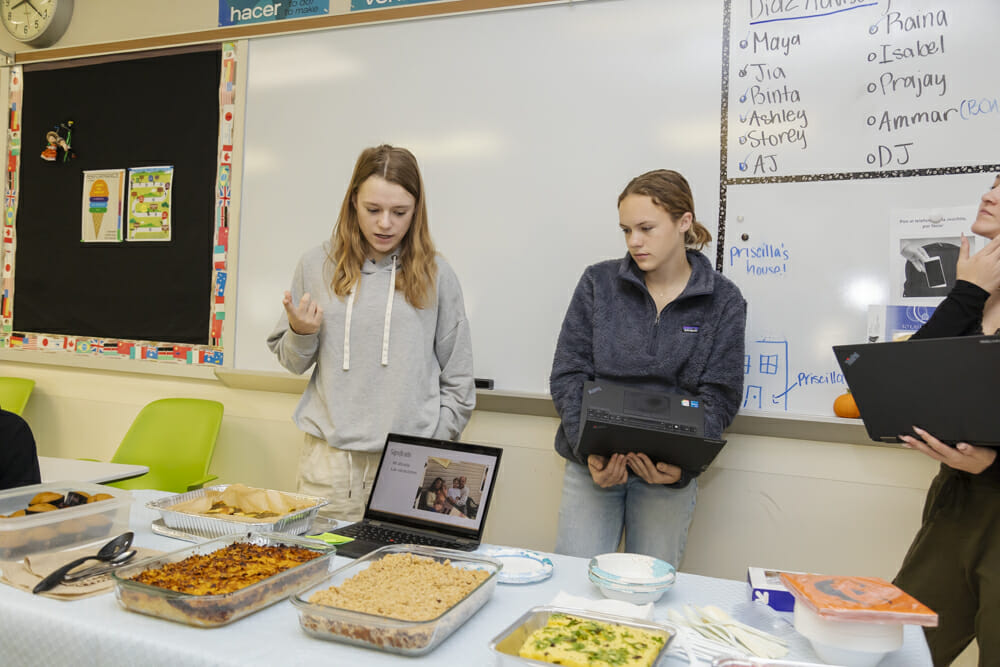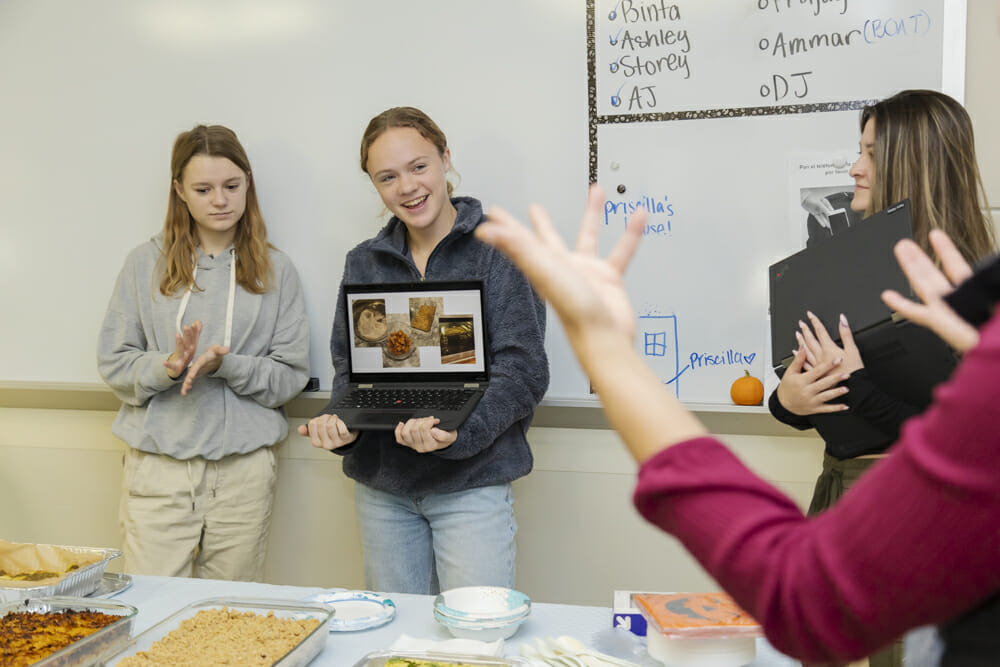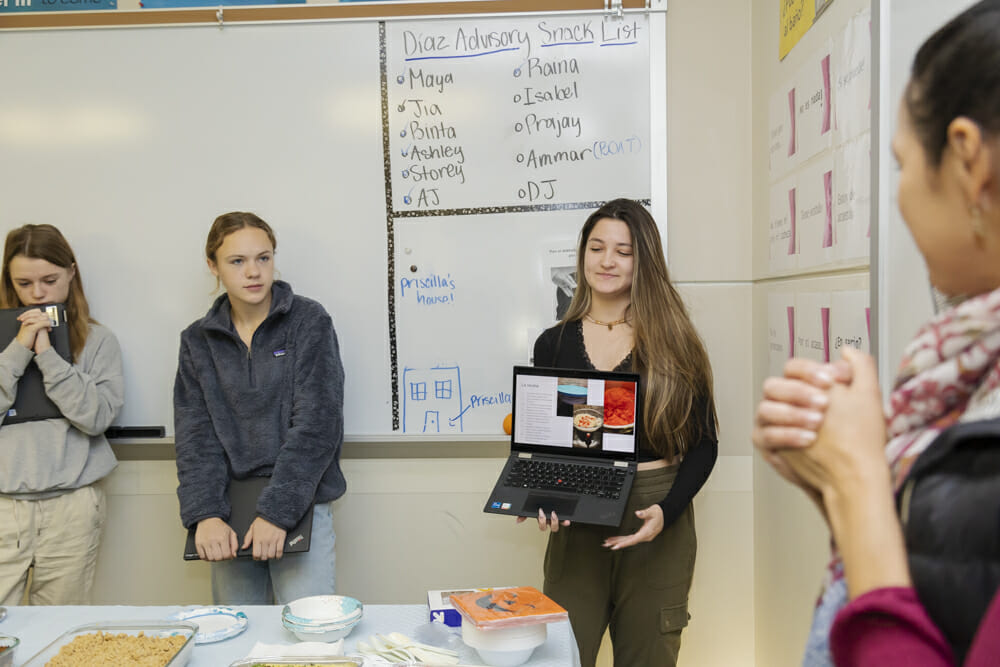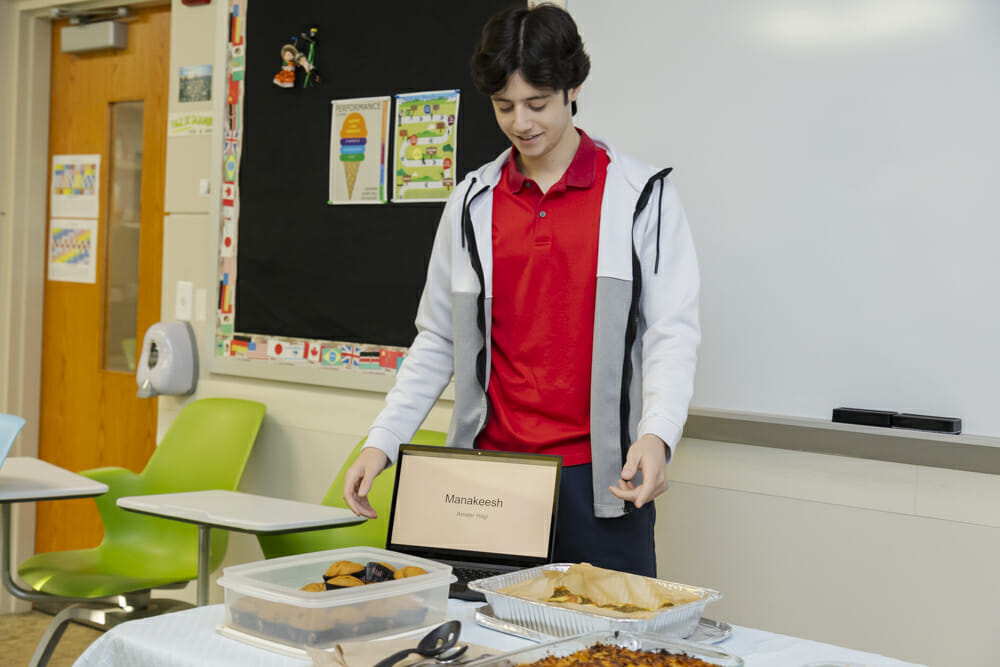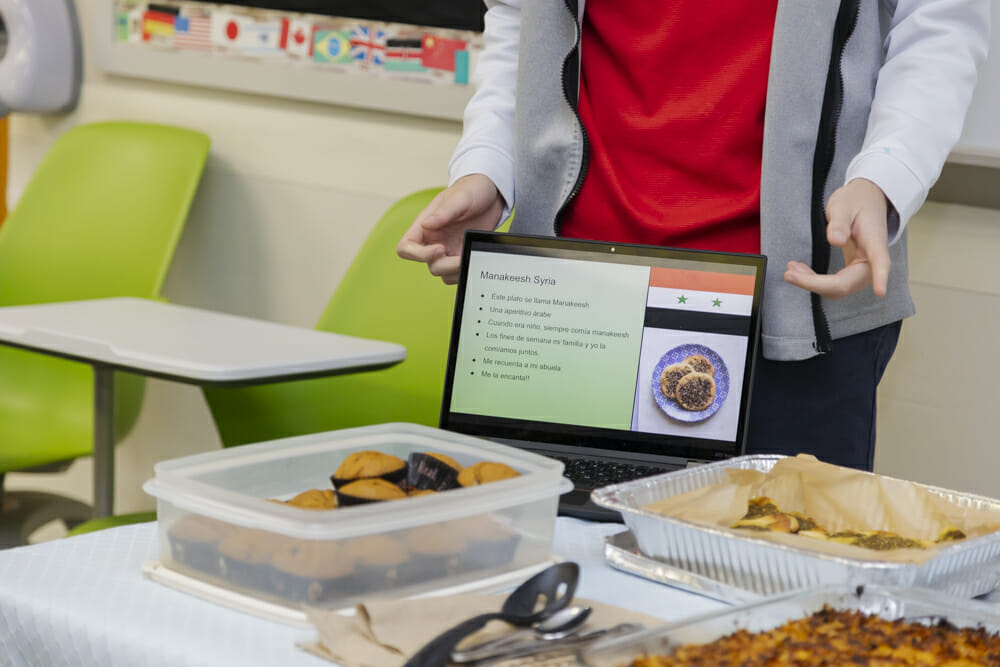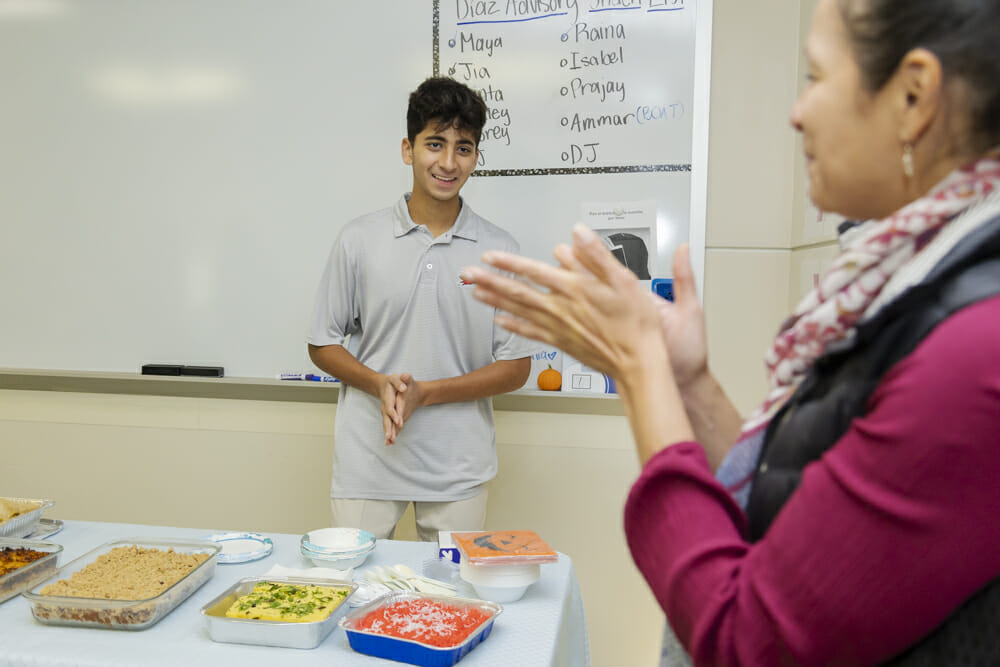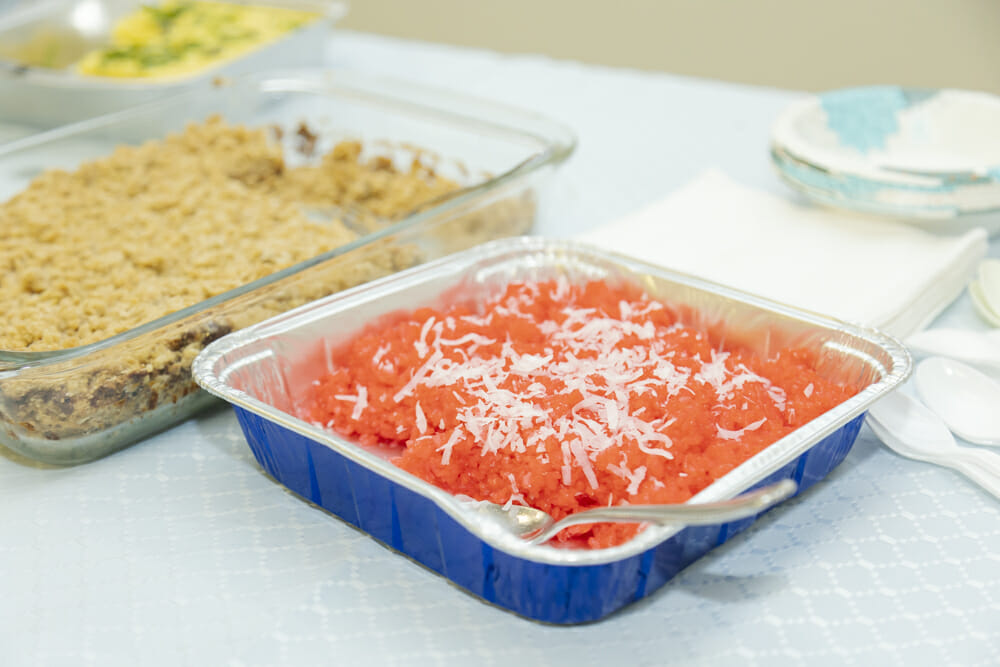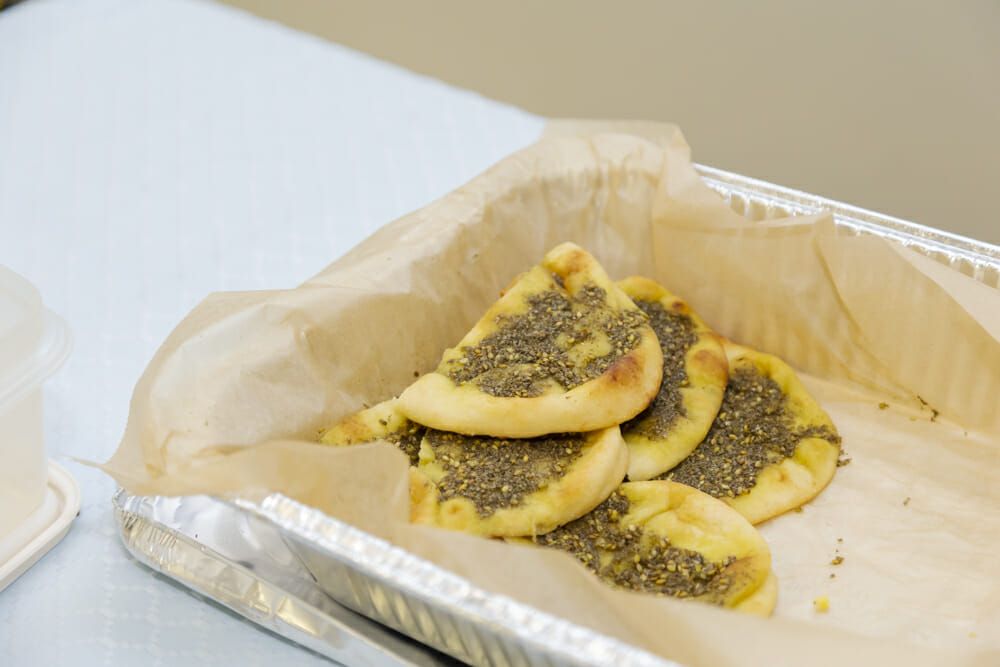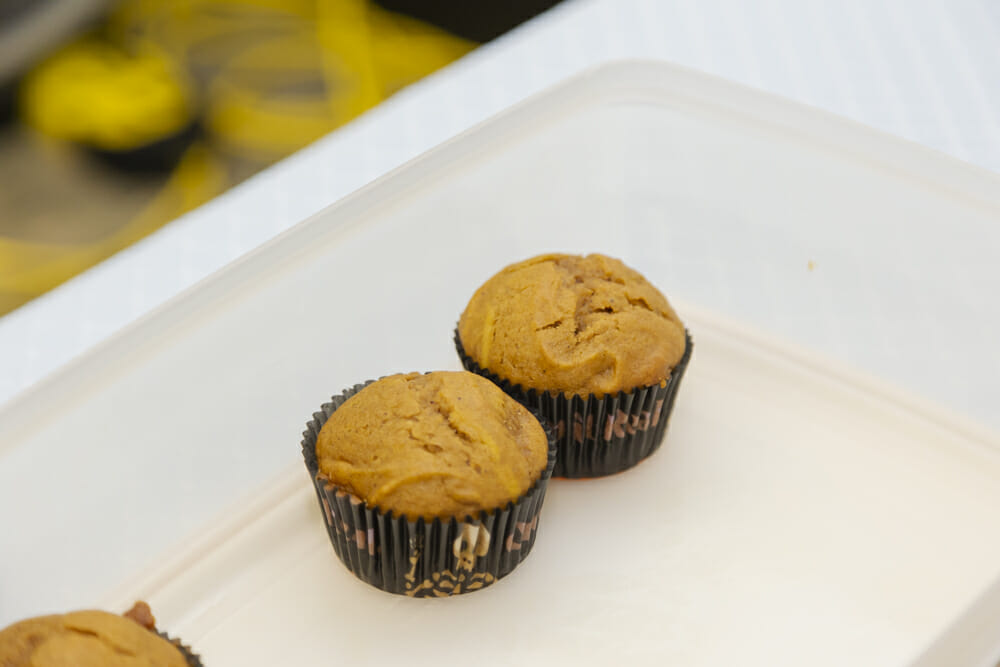It’s no secret that MICDS Upper Schoolers love food and when it can be incorporated into an assignment and eaten as part of class time, that’s even better! Upper School World Language Teacher Alyoska Díaz capitalized on this trend by encouraging her Spanish 400 students to don their chef hats and show off a recipe that is part of their family history.
Díaz said, «We are learning about personal relationships, identity, and how our culture and other cultures define who we are and become part of our identity.» Díaz is from Venezuela and wanted to share part of her culture and identity through her own homemade dish of chicken and cheese arepas that was passed down through her family. «It doesn’t matter where they are from; I wanted students to cook a dish representing their culture or ancestors. I want to hear about the feelings, emotions, and memories they experience when they smell, cook and taste that special dish,» she said.
In this unit about relationships, students also read the book La Calaca Alegre by Carrie Toth. The book is about a boy who has to unravel a family mystery, which ties into the overall theme of the unit.
Students took the assignment to heart, brought in dishes from countries such as India, China, Vietnam, Jordan, Syria, and more, and shared them over several class periods.
Ella Etherington ’24 brought in pumpkin chocolate chip muffins. «My mom and her siblings created the recipe for it, and my family makes it all the time in the fall and winter,» she said. «So on October 1, I told my family, ‘it’s time to make these!’ It has cloves, cinnamon, ginger, and all the fall flavors. Last year we had the assignment to make dishes from a Spanish-speaking country, and this year, we bought dishes from our own ancestry, which was fun.»
Ameer Hajji ’24 shared one of his favorite breakfast dishes. «I brought in Manakeesh, a traditional Syrian appetizer that my family eats a lot on the weekends,» he said. «My grandma taught my mom the recipe, and she taught all the kids. It has many spices like oregano, thyme, and olive oil. You put it on bread and pop it in the oven. It’s a simple and great breakfast.» Hajji enjoyed seeing all the different foods from different cultures, «I don’t really get to experience something like this, and I liked that I got a small glimpse of everyone’s cultures because we all come from different backgrounds.»
Karis Haney ’24 brought in xoi nuoc dua. «It’s a traditional Vietnamese plate typically colored or dyed with a color significant to the family,» she said. «My family emigrated from Vietnam during the communist revolution. My grandpa actually fought in the war, and my dish represents our immigration from Vietnam to America and how we made a life for ourselves away from the communist regime. In America, we were able to make a life for ourselves and integrate our own culture into it. The red color of the dish represents the combination of American and Vietnamese colors. I enjoyed the opportunity to display my culture as my 11th-grade class doesn’t have much Vietnamese culture represented.»
¡Buen provecho, Rams!
